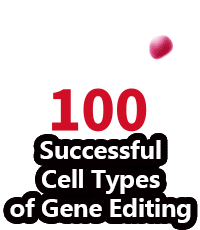Improved CRISPR gene drive solves problems of old tech
In theory, such a mechanism could be used to prevent malarial mosquitoes from transmitting disease, or possibly to wipe out an invasive species by disabling its ability to reproduce.
Though scientists have had success proving the concept in the lab, they have found that wild populations invariably adapt and develop resistance to the scheme. And when gene drives work, they are all or nothing -- without nuance -- they spread to all individuals, which can be a drawback.
Now, a Cornell study, "A Toxin-Antidote CRISPR Gene Drive System for Regional Population Modification," published Feb. 27 in the journal Nature Communications, describes a new type of gene drive with the potential to delay resistance. The method could also be applied to a regional population, limiting its spread other populations where it could have undesired effects.
"Those are two things that this new drive that we developed here addresses to some extent," said Philipp Messer, an assistant professor of computational biology, and the paper's senior author. Jackson Champer, a postdoctoral researcher in Messer's lab, is the first author.
In a classic gene drive, called a homing drive, an offspring inherits one set of genes, or genome, from the mother and another from the father. If an offspring inherits a gene with a drive from one parent and not the other, the drive copies itself into the genome from the parent without the drive.
"Now that individual has that drive in both of its genomes and it will pass it on to every offspring," Messer said.
The drives are engineered with CRISPR-Cas9 gene-editing technology, so when the drive copies itself into a new genome, the CRISPR machinery makes a cut into the chromosome without the drive, and pastes in the new code. But sometimes, cells will repair the incision and, in doing so, randomly delete DNA letters. When this happens, the CRISPR gene drive can no longer find a genetic sequence it recognizes in order to make the incision, which creates a resistance and stops the gene drive from spreading.
Natural genetic variation -- another source of changes in DNA sequences -- can also create resistance, since CRISPR gene drives must recognize short genetic sequences in order to make incisions.
"We were among the first labs to show that this is a tremendous problem," Messer said.
The paper describes a new gene drive, called TARE (Toxin-Antidote Recessive Embryo), which works by targeting a gene that is essential for an organism to function. At the same time, the organism can survive with only one intact copy of this essential gene. Instead of cutting and pasting DNA as homing drives do, the TARE drive simply cuts the other parent's gene, disabling it.
Meanwhile, the engineered TARE drive gene has a DNA sequence that has been recoded; the gene works but it won't be recognized or cut in future generations. If an offspring inherits two disabled genes, those individuals won't survive, thereby removing those copies from the population. Meanwhile, as viable individuals mate, more and more surviving offspring will carry TARE drive genes.
Just a few individuals with homing drives can spread a trait through an entire population. TARE drives, on the other hand, do not cut and paste a drive into a target gene; instead they destroy one of the target gene copies in the offspring. Because of this, the drive requires a higher frequency of engineered individuals in the population to spread. For this reason, TARE drives are less likely to transfer from one distinct population to another.
In lab experiments, when fruit flies with TARE gene drives were released in cages of wild-type fruit flies, all the flies in the cage had the TARE drive in just six generations.
The researchers pointed out that resistance can indeed evolve with a TARE drive in the wild, especially in very large populations, but they believe it will take longer and evolve at a much lower rate, Messer said.
Also contributing was Andrew Clark, professor of computational biology and molecular biology and genetics. The research was funded by the National Institutes of Health.
Story Source:
Materials provided by Cornell University. Original written by Krishna Ramanujan. Note: Content may be edited for style and length.
Journal Reference:
Jackson Champer, Esther Lee, Emily Yang, Chen Liu, Andrew G. Clark, Philipp W. Messer. A toxin-antidote CRISPR gene drive system for regional population modification. Nature Communications, 2020; 11 (1) DOI: 10.1038/s41467-020-14960-3
Ubigene Biosciences is co-founded by biological academics and elites from China, the United States, and France. We are located in Guangzhou Science City, which serves as a global center for high technology and innovation. Ubigene Biosciences has 1000㎡ office areas and laboratories, involving genome editing, cell biology technology, and zebrafish research. We provide products and services for plasmids, viruses, cells, and zebrafish. We aim to provide customers with better gene-editing tools for cell or animal research.
We developed CRISPR-U™ and CRISPR-B™ (based on CRISPR/Cas9 technology) which is more efficient than general CRISPR/Cas9 in double-strand breaking, CRISPR-U™ and CRISPR-B™ can greatly improve the efficiency of homologous recombination, easily achieve knockout (KO), point mutation (PM) and knockin (KI) in vitro and in vivo.
Genome Editing Platform
——Focusing on the Application of CRISPR-U™ and CRISPR-B™ Gene Editing Technology
1. Provides various types of gene-editing vectors for different species.2. Provides different virus packaging services, including lentiviruses, adenoviruses and adeno-associated viruses.3. Provides high-quality services for gene knockout, point mutation and knockin cell lines.
Cell Biology Platform
——Focusing on primary cell
1. Provides over 400 types of primary cells.2. Provides culture strategies and related products for different cell types.3. Provides cell biology-related services such as cell isolation, extraction and validation.
